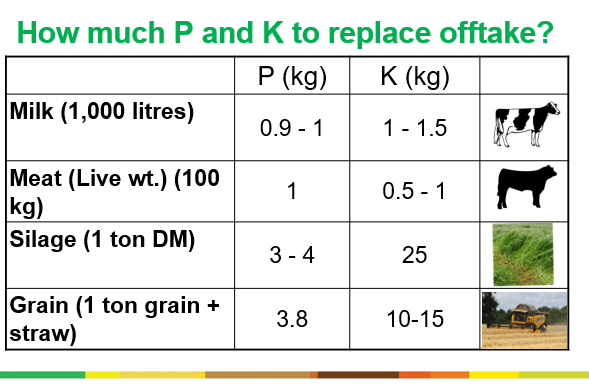Rectifying Soil Fertility Starts Now
Rectifying Soil Fertility Starts Now 28 November 2023 Type Media Article By John Kilboyle B&T Adviser, Teagasc Galway/Clare Below is a reminder of the two new requirements from the latest “Nitrates Action Plan” From 1st January 2023, all farmers above 130 kg Organic Nitrogen/ha must take soil samples. In the absence of soil samples, Index […]
By By John Kilboyle B&T Adviser, Teagasc Galway/Clare
Rectifying Soil Fertility Starts Now
Type Media Article
By John Kilboyle B&T Adviser, Teagasc Galway/Clare
Below is a reminder of the two new requirements from the latest “Nitrates Action Plan”
- From 1st January 2023, all farmers above 130 kg Organic Nitrogen/ha must take soil samples. In the absence of soil samples, Index 4 for Phosphorus will be assumed.
- All arable land sown from 1st January 2023 must take soil samples.
What does this mean for farmers in this category?
Essentially you will need soil samples to prove that your land requires phosphorus for the coming year.
In addition, a third new requirement for soil sampling applies to all participants of the ACRES scheme, both Co-operation and General, who must have soil samples taken on their farms and uploaded on the ACRES system on Agfood by 15th May 2024.
While it can be easy to get caught up in just taking soil samples purely for ‘regulation compliance’ purposes, there remains a huge opportunity on all farms to use soil sample analysis results to put in place a targeted nutrient management plan to improve soil fertility.
With the increased fertiliser price’s the last number of years it is essential you get the best use out of every granule of fertiliser spread. Currently over 90% of samples taken are either deficient in lime, Phosphorus (P) or Potassium (K) which is greatly reducing your soils ability to grow a crop. Soils with below par nutrient status may lock up P and K consequently reducing grass growth by over 25%. What this means in reality for example, if you had a 100 acre farm with optimum soil fertility, you would grow the same amount of grass as a farm of 125 acres with poor soil fertility. Everyone’s situation is different but often this extra land may come in the form of a rented out block on many farms. This is not only an additional cost to the system but also brings with it extra workload. The question to ask yourself is, can your system afford this, or is there an opportunity to improve soil fertility on some of your land to consolidate and simplify your farm system?
When it comes to individual farms, we need to understand there are a multitude of factors effecting the nutrient status of our soil – stocking rate, crop type, silage offtakes, rainfall are some of the major contributors to low nutrient status. Frequent sampling is the only way to keep on top of the problem. I would suggest soil sampling every two years as there can be drastic changes year on year in soil and leaving any longer could have you focusing on a problem that has already been corrected.
When taking the sample it should consist of 20 cores and taken in a W pattern in the field with no more than five hectares of area included in each sample. This one small box represents up to 6500 tonnes of soil emphasising the importance to getting it done accurately. Leave a minimum of three months (but ideally longer) since the last application of chemical/organic P or K.
When the sample results are back, sit down with your adviser and complete a nutrient management plan for the farm. Your soil sample results will form the basis of your decisions on where to apply slurry, FYM, lime and chemical forms of Phosphorous and Potassium for the 4 years ahead while also giving you your chemical Nitrogen & Phosphorous limits that you are allowed to spread on farm within the nitrates regulations. If taken and used properly it will allow you to:
- Apply nutrients where they are required
- Avoid wasting nutrients by applying them where they are not needed
- Avoid causing a pollution risk by applying excessive nutrients to a field where they are not required.
- Achieve maximum growth rates by having optimal soil fertility i.e. a soil pH of 6.2 – 6.5, and Index 3 for Phosphorous (P) and Potassium (K).
Correct pH/lime deficiencies first before you tackle the P or K as the lower pH could be locking up these nutrients. Organic manure be it slurry or farmyard manure should be targeted at lower P & K index fields, if possible. Building P and K indexes can take a varied amount of time and nutrient input. This will largely depend on the soil type and the level of Offtakes coming off different fields and whether that is in form of grazed grass or silage. Offtakes need to be first matched by inputs and the table below can give you some idea of what is needed to maintain indexes, then additional P & K can be targeted to build soil fertility. Discuss this with your agricultural adviser and implement a plan suitable to your farm.

